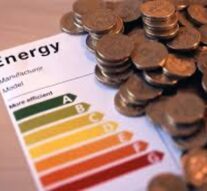
Future challenges for the Eu energy market
Energy 8 May 2023Estimated time of reading: ~ 2 minutes
Energy represents one of the main sectors in which the EU Single Market has become a crucial feature for European economies and consumers. This is especially true after a complicated year ahead, such as 2022, in which the consequences of the Russian invasion of Ukraine led to a painful crisis for EU citizens and businesses, who saw wholesale prices of both electricity and natural gas grow nearly four times in the third quarter of 2022 compared with the year before.
The EU energy system faces some structural challenges in its transition away from carbon-emitting fossil fuels at a time when the market is afflicted by supply constraints. The future sees EU countries in need of alternative suppliers as Russia will no longer be the main exporter of hydrocarbons to the European markets, while demand for electricity continues to increase because of decarbonization and electrification throughout various sectors of the EU economies.
Europe’s power market will thus be linked to even greater needs for industries and consumers, with electricity set to become the most important feature. According to some estimates from the management consulting firm McKinsey & Company, between 2021 and 2030, electricity demand in Europe will rise by nearly 3 percent annually, driven by the electrification of transport, while after 2030, the use of green or potentially red hydrogen (hydrogen created with nuclear energy) for manufacturing will record substantial growth. The EU countries should also focus on managing the intermittency tied to the increased use of renewable sources, such as wind and solar power, thinking of the European energy system as a whole. Finally, reforms are crucial for the well-functioning of the European Single Market on energy. This is really important for the goal of avoiding any future price volatility, as well as reinforcing investment in new green capacities and finding a balance between the demand of consumers and the energy output in Europe.
Written by: Francesco Marino


